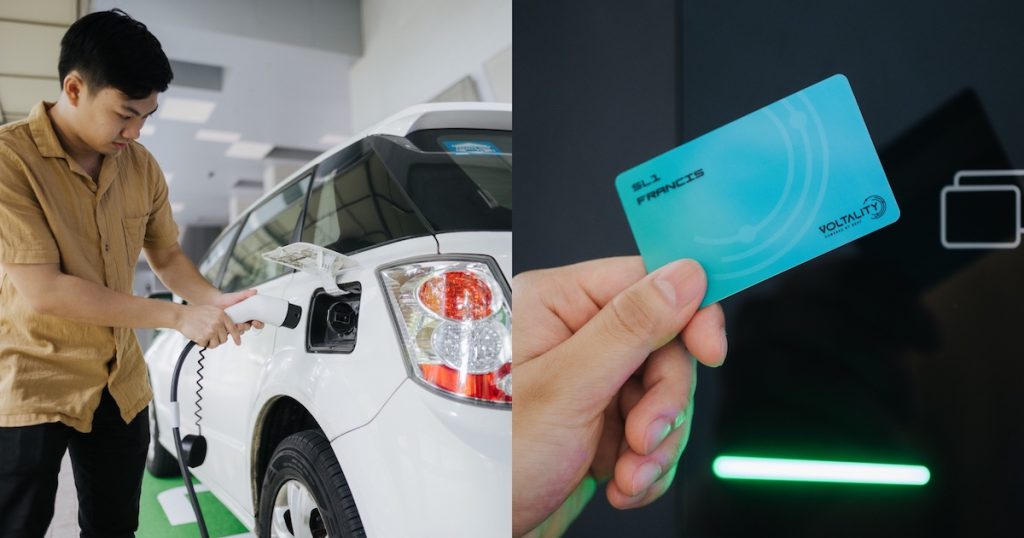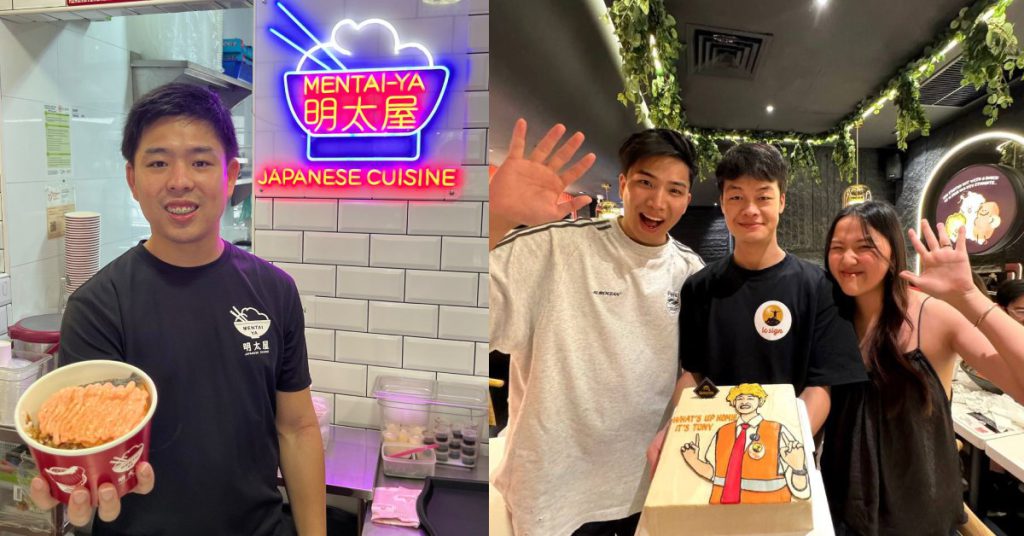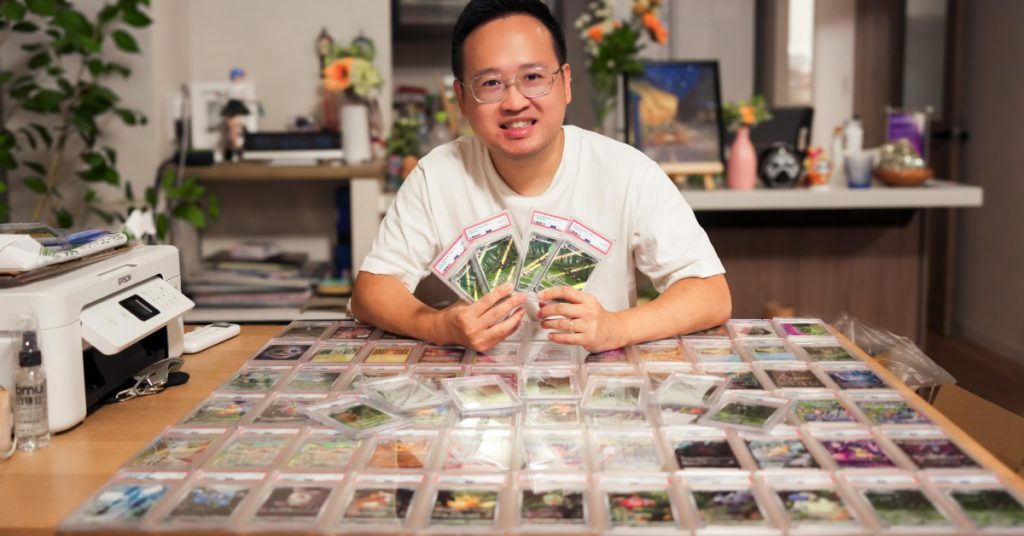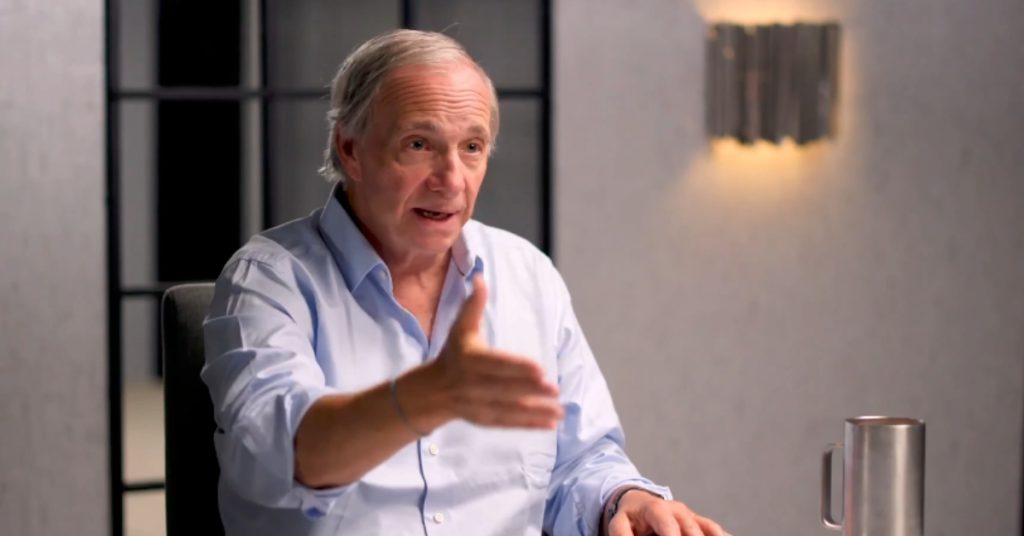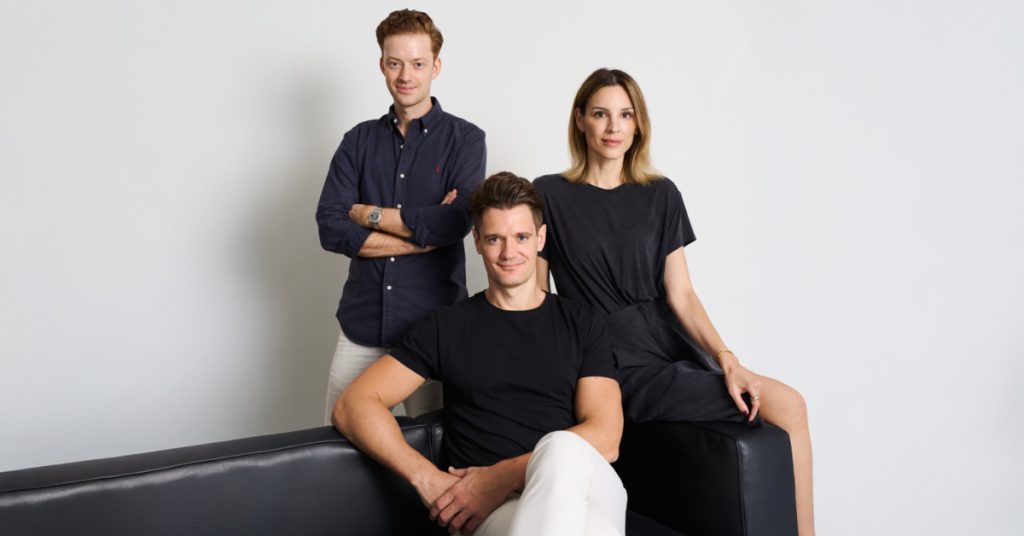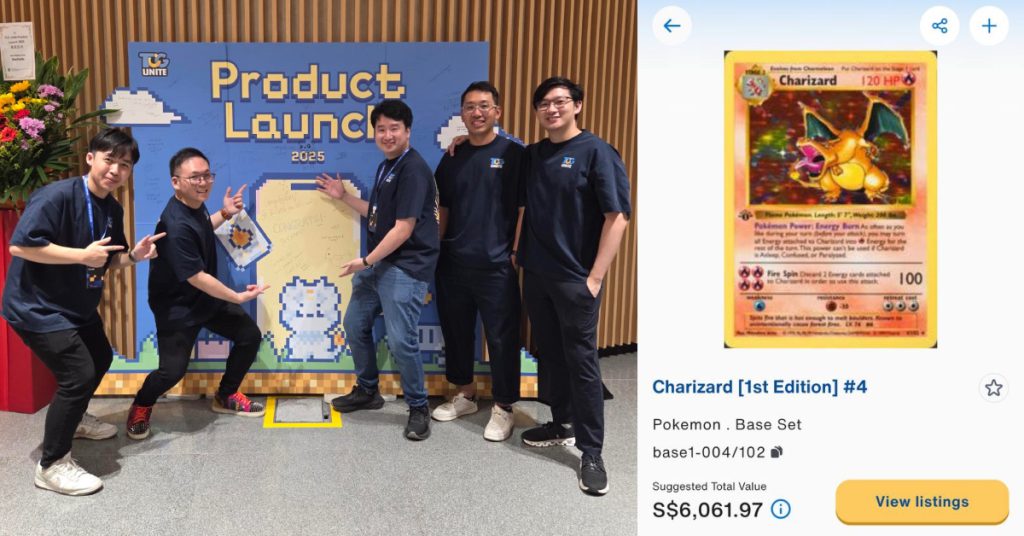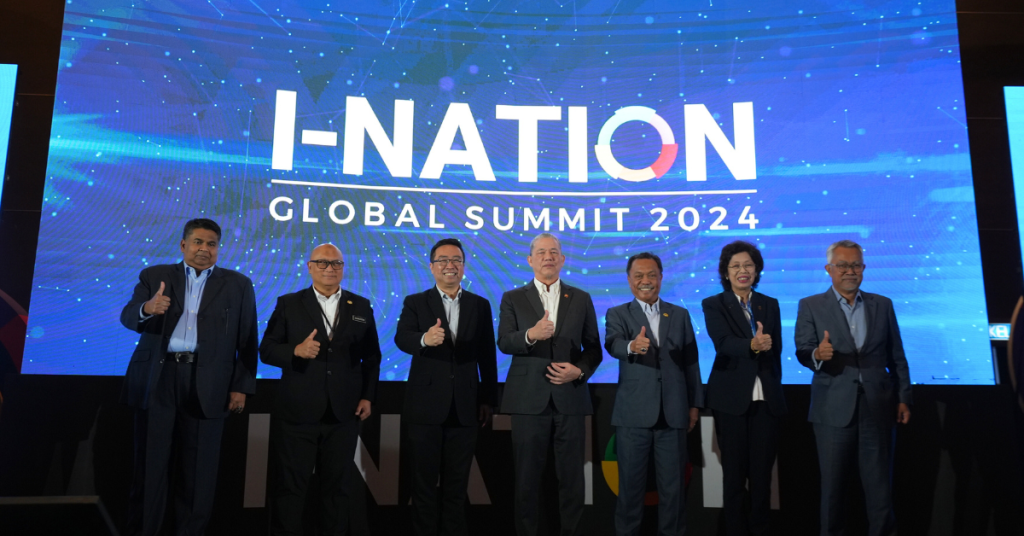Kristoffer Jacek Soh first met Terence Tan when they were both serving the army during National Service (NS). Whenever they had free time in the camp, the two of them would read technical documents on payment systems, applications and database development.
As students themselves, they understood the pain point of long queues at the canteen during recess time, and would brainstorm ways on building a system for students to pre-order and pay with their EZ-Link card to remove the hassle of queuing.
The duo spent the remaining time in NS tinkering around, eventually building their startup Beep, a universal Internet of Things (IoT) platform. It was officially incorporated in 2018 when they were awarded the Startup SG Founder grant by Enterprise Singapore.
After completing their two-year service, they roped in Benjamin Long — who is Kristoffer’s close friend and former schoolmate — to join as a co-founder.
Beep was starting to gain some traction then but Kristoffer had just enrolled into the National University of Singapore (NUS), pursuing a Computer Science degree under a National Infocomm Scholarship.
It was a good opportunity, but Kristoffer felt that the founders would not be able to dedicate enough time and attention to Beep if they were to start schooling. As such, they applied to NUS Enterprise and the School of Computing’s The Furnace to be accepted as a portfolio company. With their support, he applied for a Leave of Absence (LOA) together with Benjamin.
They received approval the day before term started, and spent the next six months working on research and development (R&D). Their R&D efforts were not quite done yet, so they ended up applying for a second LOA. They barely managed to secure it, and were told that they had to either return to school or drop out should they wish to apply for a third LOA.
By July 2019, we made the decision to drop out and I gave up my scholarship, hoping that we’d be able to close our first major customer we had been working on for months.
It turned out to be a good bet, as we sealed the deal that September. [We] raised our pre-seed round in December, and just kept on going from there. Along the way, Terence had also taken a gap year to help spur our growth together.
– Kristoffer Jacek Soh, co-founder and CEO of Beep
Making vending machines cashless
Whilst building a simple ordering app was relatively easy, they found that accepting cashless payments has been challenging for many hawkers, especially since unified payment code Singapore Quick Response Code (SGQR) and cashless payment terminals were non-existent back in 2017.
During the National Day Rally speech that year, Prime Minister Lee Hsien Loong pushed for the adoption of e-payments in Singapore. This inspired them to build a “Square for Southeast Asia”, providing an easy and affordable way to accept cashless payments through a mobile app and Bluetooth card reader.

We had spent over a year between book-outs to build a functional app and reader prototype with several customers when SGQR was announced in 2018, eliminating the pain points we originally targeted. You could download a merchant app, stick on a QR sticker, and start accepting cashless [at] basically no cost.
Yet at the same time, we noticed that the vending machines in our army camp were quite old and still only accepted cash. Unlike retail stores, you couldn’t just slap a QR [code] onto a machine and expect it to understand how it worked — but we could modify what we had built for retailers to help machines do just that.
– Kristoffer Jacek Soh, co-founder and CEO of Beep
Over the last four years of working with device manufacturers and operators, they also saw a constant gap in supporting the localised, contextual connectivity needed for a device to actually work in a commercial setting.
“For example, you could buy a vending machine and use it to dispense items for free, or install a charging station in your home for personal use. But if you want to collect payments, identify and differentiate customers, or ask for information from users, before you dispense items or charge a vehicle, there’s no easy way to do it. The standard way is to buy additional expensive hardware or build customised software for each use case, making it very costly and time-consuming to deploy.”
“We realised that we could build a modular software platform pulling together all of the common needs across businesses, and work with manufacturers and device owners to embed those capabilities into their devices, so they have a single connection to an ever-growing range of features that can be easily turned on or off remotely. Essentially, we make it easy for IoT devices to better serve customers and generate greater value for businesses.”
After the team completed their R&D, they closed their first sale of 100 units to a Singapore distributor of vending machines in late 2019. Then in early 2020, they closed sales of another 100 units each to Malaysian and Hong Kong operators of vending machines.
But first, they needed to gain trust among consumers
From their initial concept of building a card reader and companion app, to their first large sale of 100 IoT units geared at vending machines, they learnt the hard way on how to design and build everything from scratch.
“Hardware is hard, and trying to launch a startup merging hardware and software, with no prior work experience or university education, compounds the difficulty several times further,” lamented Kristoffer.
“Understandably, many of our prospective customers found it hard to trust us or take us seriously, as we had no track record of relevant experience we could point to, to assure them that we could achieve what we claimed to do.”
They spent a significant amount of time earning that trust by taking incremental steps, doing free trials and small deployments, taking on projects that were not yet scalable, and focusing on providing as much support as possible regardless of the time required to prove their capabilities.
This helped them build up a small portfolio of successful references, which helped convince their first major customer — a local machines distributor — to take the chance and commit to the first bulk purchase and push Beep’s platform to their own customers. However, it was extremely time-consuming and unscalable for the long run.
But gradually, as they grew their capabilities and gained credibility in the industry, they realised that they could focus on building a virtuous cycle of referrals and organic growth by moving higher up the value chain and working with manufacturers or distributors.

As young entrepreneurs, Kristoffer admits that it is even more challenging for them to build the company.
“I think our youth and inexperience is a double-edged sword,” explained Kristoffer. “People are more open to us and willing to share their thoughts and pain points, viewing us more as a mentee looking for advice, rather than a salesperson trying to push products to them.”
This also allows them to propose different ways of doing things and ask “stupid questions” without fear of appearing incompetent, making it easier for them to perform small trials to test things out with accommodating customers.
However, it was also much harder for them to cross the threshold from trials to full-fledged purchases.
“Although we never faced direct criticism or doubt upfront, it was always evident that our apparent lack of experience and people’s tendencies to view us more like students [who are] just doing work on the side, made it difficult for them to commit to using our platform in earnest, since there were real questions about whether we are truly serious about what we’re doing and if we could provide continuous service and support on an enterprise scale with no prior track record.”
That was why they worked hard to prove themselves by securing larger commercial contracts.
I think the the main [turning] point was when we secured and successfully deployed the nationwide machine distributions together with the government and Temasek Foundation. Having such a high profile, trustworthy and large-scale success made it much easier for us to assuage any doubt about our capabilities to other customers.
– Kristoffer Jacek Soh, co-founder and CEO of Beep
In late 2021, it also rolled out early deployments and trials for customers of vending machines in Indonesia and the Philippines.
COVID-19 was a “tough trial-by-fire”
When COVID-19 first hit, Beep had barely expanded beyond its first major contract.
“Our original target market of traditional vending machine operators took a huge hit as locations with the best machine sales like tourist attractions, offices, schools and factories, all shut down. Our own manufacturing supply chain was severely disrupted,” lamented Kristoffer.
“Overseas travel became impossible, and our nature of dealing with hardware meant that new machine tests with customers abroad ended up dragging for over a year [when it] should have taken a simple two to three-day trip.”
He shared that it was challenging navigating the uncertain Covid climate, with wave after wave of variants.
Furthermore, they had “little reserves to spare” since they only had a small pre-seed financing round, which forced them to be financially prudent and disciplined in their spending, whilst still needing to spend on R&D that wouldn’t generate immediate returns.
On the bright side, the pandemic significantly accelerated the digitisation of many industries, and more people got accustomed to using QR codes for both SafeEntry check-ins and contactless payments.
Even traditional businesses saw the need to embrace technology and evolve to survive. For example, we helped enable contactless sampling machines that supplemented supermarket promoters during the pandemic, many of which continue to this day.
As we move into an endemic state, many large vending operators whom were initially hesitant to embrace cashless payments and cloud platforms are also now actively working with us to augment their fleet of machines together.
– Kristoffer Jacek Soh, co-founder and CEO of Beep

Their technical flexibility also allowed them to find other revenue sources during the pandemic by working with public and private healthcare institutions to automate COVID-19 processes, whilst preparing for future growth markets like e-mobility.
The foundations laid in both of these industries continue to generate good returns, and they are also actively working behind-the-scenes on further healthcare automations beyond the pandemic.
“Overall, COVID-19 was a tough trial-by-fire that forged us into a far more robust, diversified and established platform, bringing with it a significant shift in mindsets with many opportunities for us to grow on moving into the future,” said Kristoffer.
Beep played a crucial role in the national COVID campaign
From late 2019 to early 2020, Beep had grown from their first 100 units to at least 300, expanding their deployments in Malaysia and Hong Kong.
Another key expansion was in the types of machines we worked on. Initially, we’d focused on upgrading legacy machines with our platform, but some of the machine operators wanted us to also add support for new machines they were purchasing straight from overseas manufacturers.
We started working directly with a manufacturer to embed our software into their systems, and had a functional prototype just as Singapore enacted its first circuit breaker in April 2020.
– Kristoffer Jacek Soh, co-founder and CEO of Beep
During the first national mask distribution in February 2020, the government needed an army of volunteers to facilitate manual distributions across community concerns, which raised concerns of efficiency and risk of transmission.
This was why it issued a tender exploring the possibility of using machines to dispense masks, which opened up an opportunity for Beep.

“We were brought in by some of our customers who operated machines to propose what could be done. Using our newly-developed capability of embedding software into new machines, we demonstrated the ability to modify our platform from accepting cashless payments to accepting NRIC barcodes, and dispensing products in a working prototype [within] just a few days.”
This proved that they could scale and deploy as fast as manufacturers could churn out machines, which was critical to meet the deadline of developing 400 machines in just one month, and subsequently 1,200 the following month.
“We had to evolve from a platform supporting hundreds of transactions per day, to one powering hundreds of transactions per second, supporting peak loads of up to 1,000,000 redemptions in a day. This forced us to rapidly evolve our technology at a breakneck pace.”
They worked round-the-clock and through weekends together with the machine operator, F&N Warburg, racing to scale up and stabilise their platform, while streamlining machine software setup at the warehouse as they were shipping in, and integrating with GovTech’s system on the fly.
As they stabilised and successfully executed the first few nationwide mask distributions, they also saw the opportunity to extend their platform to power other types of distributions using different methods of identifications and machines.

Hence, they worked together with Temasek Foundation and F&N Warburg to propose and test out the dispensing of hand sanitisers, ART kits and TraceTogether tokens with partners including Singapore Power, Ministry of Health, and the Smart National and Digital Government Office (SNDGO).
To date, it has rolled out eight rounds of nationwide distributions for masks.
Beyond vending machines, they worked with shopping centres and supermarkets to power physical nationwide distributions through point-of-sale devices and service counters, all connected to the same unified platform.
They also replicated the platform abroad, working with their partner machine operator for Hong Kong’s Department of Health to dispense COVID saliva test kits.
“Going from a cashless payments enabler for legacy machines to a versatile, multi-modal management system helped shape our core platform’s design as a universal IOT interface, rather than one specifically built for only certain types of machines or software features. This laid the foundation for us to expand into other industries including e-mobility and healthcare,” said Kristoffer.
Simplifying EV charging with a single card
In June 2022, Beep started up an e-mobility arm, called Voltality, which has a mission to provide seamless and instant charging access across the Southeast Asian region.
Charging your EV today is quite a hassle, with drivers needing to download different apps just to charge at different stations (up to 15 in Singapore), maintaining different user accounts and often needing to put a deposit of around S$50 per app just to get started — a far worse experience than refuelling your ICE car today.
– Kristoffer Jacek Soh, co-founder and CEO of Beep
Noting these pain points, Voltality’s goal is to make the experience of charging EVs as seamless and frictionless as possible.
What Kristoffer envisions is for drivers to one day be able to simply drive up to any charging station in Singapore or beyond and when they plug in their vehicle, charging will automatically start. At the same time, identification and payments are also handled automatically between the car and the charger.
To achieve this, they are focusing on two major product lines: VoltPOS and VoltNet.
“Just as you can pay with your favourite credit or debit card at any gas station today without downloading an app, VoltPOS allows charging stations to support ad-hoc cashless payments so drivers can easily pay for their charge with minimal hassle,” explained Kristoffer.
“This is especially important for publicly accessible stations where any driver can charge, allowing them to tap or scan to pay with no sign-ups required. By accepting popular local and international payment methods at each station, cross-border charging can become as easy as pumping gas is today.”

Just like how we can travel from Singapore to Malaysia without having to change SIM cards with the use of roaming data, VoltNet is its e-roaming platform that helps connect various charge point operators and e-mobility service providers together onto a common network, so that drivers can charge at different stations with a single application or card.
“This is very useful for commercial users like private-hire drivers who have to constantly roam and charge across Singapore, and we’re in the midst of a closed trial of the region’s first e-roaming pilot with five participating charging operators, where drivers can use a single card to tap and pay across their stations.”
In addition, Voltality is also working with a major automaker to support multi-operator connectivity for their driver application. According to Kristoffer, they are also currently in talks with operators in neighbouring countries like Malaysia and Thailand to expand support for their stations.
Disrupting the EV landscape
Since its incorporation in late 2018, Beep has recorded consistent, multiple-fold revenue growth for every financial year, crossing the seven-figure threshold for financial year end 2022.
We’ve achieved this with only a single, mid six-figure pre-seed round at the end of 2019 besides the SG Founder Grant.
We’ve powered over 33 million transactions to date, and have been used across more than 3,000 touchpoints with customers in five countries, serving every business type from sole proprietors to SMEs, large enterprises and even government agencies across various industry segments.
– Kristoffer Jacek Soh, co-founder and CEO of Beep
Commenting on the EV landscape in Singapore, he observed that the adoption rate has been accelerating, and the fact the government has set out a target to deploy 60,000 charging stations islandwide by 2030 also helps to fuel the EV ambition.
He added that since Singapore is a small nation, he finds that range anxiety is not such a big concern as compared to drivers in large regions like US, Europe or China. Therefore, accessibility is less about the availability of chargers, but more about the convenience and ease of use of these chargers.
This is especially true for fleet operators, including private-hire drivers, taxis and delivery providers, whose drivers have to constantly run around the entire island with high-energy consumption, requiring more frequent charging.
“During the early days, it is still okay for drivers to have to manage different card systems and applications to charge their vehicles, but as we fully commercialise and move to the mainstream, we need to streamline and automate these key interactions to significantly reduce the friction involved in using an EV.”

Kristoffer also observed that there will be a rise in embedded connectivity when it comes to vehicle adoption, providing the ability to locate, reserve and charge as a value-added service.
This can extend far beyond the vehicle’s own management app or car dashboard. For example, fintech superapps like DBS PayLah, OCBC PayAnyone and Grab already provide value-added services for their users, from booking movie tickets to food deliveries, and even paying for petrol. Electric charging would be a natural extension for them.
By embracing larger ecosystems where customers already are and leveraging them to provide better cross-functional value, owning an EV can become more attractive than fuel-based vehicles with added perks for charging and driving them across the different touchpoints that drivers interact with whilst going about their daily lives.
To achieve this, these ecosystems need an easy way to provide such connectivity across any type of charging station system or provider, without going through the hassle of performing integrations with each and every type of station in the market.
This is one of the main reasons why they’re building a unified network that can offer a single point of connectivity for any business.
“Ultimately, our goal is to build a single point of connectivity for upstream players like device manufacturers to help them better serve their customers, and grow together with them in the various industries and geographies they sell to,” said Kristoffer.
“For Voltality, this would also allow us to achieve our vision of providing seamless, embedded charging access for any electric vehicle, giving drivers the freedom to go anywhere they wish across countries without worrying about their next charge, whilst allowing businesses to add charging connectivity directly into their own ecosystems to better serve their customer base.”
Featured Image Credit: Beep


